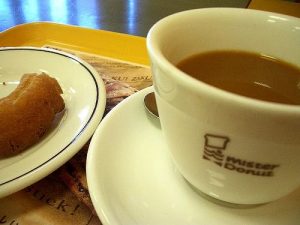Hi Edubloggers,
Since the School year and Spring Blogging challenge is slowly coming to an end, teachers and instructors want to know how much students have improved over the past few months or weeks. So for this post, I will be going more intensive on my Japan trip in 2013.
The first place me and my family went to was the northern island of Sapporo. When we landed, we read that there was a light blizzard that struck Sapporo that left it caked in fresh, clean snow. So when we landed, it was snowing! Since the time gap between Hawaii and Japan was significantly far apart, I was both excited because it was one of the first actual snowfalls I saw and tired because of the time gap difference. After leaving New Chitose Airport, we went straight to a subway to go to a nearby hotel. The next morning, for Asagohan or Breakfast, they had these machines where you input what food you want to eat and give it yen ( Japanese Currency) it will deliver the order to the chef and they’ll prepare your food. It was a slightly different breakfast since it consisted of fish and pickled vegetables. However, it was delicious. Another thing I remember about Sapporo is the Mister Doughnut shop which makes small Mochi Doughnuts.

The next place we went to was Tokyo or formally known, Edo. Honestly, I don’t really remember the order of these events so I will just list them. One of my fonder places I went to was the Disney Land and Sea which was the first Disneyland I went to. Another on is the Tokyo tower which I remembered for making your own coins, buying their soft serve, and looking at many of their attractions in their gift shops. Another activity was the full city bus tour that gave us an oral speech about some of the places and attractions, as well as some of the history of Tokyo. The Kaminarimon, or “Thunder Gate” is one of the most popular tourist attractions in Tokyo, Japan. It is the outer gate among two large entrances that lead to the Senso-Ji, an ancient – and the largest – Buddhist temple in Tokyo, particularly in Asakusa, Taito, which we went to pray and offer omiyage. The Sumida River, Meiji shrine, and Asakusa shrine were all sites to look at the Spring Cherry Blossom Festival. The Tokyo Imperial palace, which was a great place to take a great stroll, gave us another opportunity to look at the Cherry Blossoms.

The last place we went was Osaka. The first place we went to was Universal Studios, Osaka. One of my favorite rides was the Space Fantasy Ride, which the goal of the player is to gather positive energy in order to save planet earth by re-energizing the failing sun. Another place is the Osaka Castle, is a monument which used to be the royal place which featured plays like Kabuki or Noh Dramas.
So, these are the places I went in 2013. I can’t wait to go back to Japan in 2019 as an 8th grader and relive the Japan Experience. Anyway, that’s all for now.
Bye,
Hmschad











Hi Chantelle,
I loved your custom quotes! I think that this quote will be very supportive to many others who are down.
Looking at your other posts, they were very descriptive and detailed such as your rules, stories, and participation in the SBC.
Later when you are free or want to visit my blog, you can by clicking over here!
Cheers,
Hmschad